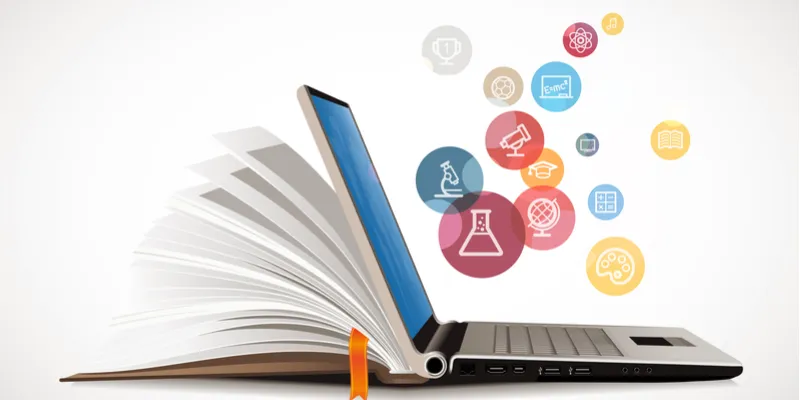Virtual note-taking, webinars and podcasts: Education for the digital natives
With virtual reality and artificial intelligence taking over the world, the education sector is undergoing a major technological transformation. Traditional classrooms are no longer able to cater to the needs of the 21st Century.

Imagine a classroom of only 25 students, each one receiving customised tutorial with the help of a virtual assistant, which is able to understand every student’s emotional state from the body language, facial expressions and tone of voice. Or, maybe, draw a predictive analysis of the student’s previous performance, and determine which module would be the best for him to tackle in the next class.
Such scenarios would have seemed far-fetched two decades ago when education could only be imparted using a pen, paper and chalkboard. However, we have seen how technology has taken centre stage and touched every sphere of our lives with education being no exception.
Studies show that in the next 30 years, technology is going to change even faster than we can adapt to it. The online education market in India is set to grow from $250 million in 2016 to $1.96 billion in 2021. It is expected to grow at an annual rate of 52 percent, according to a joint study by audit agency KPMG (India) and Google on ‘Online Education in India: 2021’. It states that machine learning, virtual reality for interactive learning, and big data in teaching methodology are most likely to cause disruptions in the education sector.
Within this context, the dilemma faced by modern educators is whether technology is beneficial in enhancing the quality of education, or whether it would be a distraction to the actual learning process. However, repeated surveys from trusted sources suggest that teachers connect better with students with the help of learning devices, and technology drives excellent learning outcomes. In a recent survey conducted by Quizlet, an online learning tool provider in the US, it was confirmed that 69 percent of students say devices help them learn, while 40 percent of teachers say devices help them teach.
Why is it important to integrate technology in modern classrooms?
With virtual reality and artificial intelligence taking over the world, the education sector is undergoing a major technological transformation. Traditional classrooms are no longer able to cater to the needs of the 21st Century. The digital natives, as the present generation is referred to, enjoy more self-dependent and self-directed approach to learning, which can be accomplished with the help of technology. Also, technology-oriented classrooms make the students ICT ready and adaptable to the changing world.
Teachers too can upgrade their skills through online learning programmes and professional communities to significantly increase their teaching standards and learn from best practices.
How is technology benefiting education?
Today, a technology used in the classroom is as strong as the content provided. SMART TVs, touch screens, collar mikes for better acoustics, and personal learning devices--through which students and teachers can communicate virtually--are facilities that help students be active participants in the learning process by sharing information with each other in real time.
Wi-Fi-enabled classrooms have made it easy to connect to and interact with experts from any corner of the world, with the press of a button. Collaboration and interaction with peers from across the seas is also possible, which helps students share ideas, gain a broader perspective of the world and better their learning outcomes. Twiddla, Skype, Edmodo, Google Classroom, and many such communication platforms have expanded and contracted classrooms at the same time while enhancing collaboration. This has resulted in multi-faceted learning and is shaping them as lifelong learners who know the importance of teamwork and exchange of ideas.
Adding to the richness of such experiences is the way technology has augmented learning by catering to the preferences of each learner. Some prefer listening to recordings, others want to watch video tutorials while some others prefer taking virtual notes during lectures. With technology at the core, customised learning tools and environments will only add to student-centric benefits. The ideal scenario will be an amalgamation of animations, infographics, podcasts and webinars enabling communication with subject experts.
And last but not least, we cannot ignore the far-reaching effect of technology in reducing the skill-gap. As technology is acquiring a central role in education, schools are training their students in STEM (Science, Technology, Engineering and Math) skills even before they hit the workforce. Students get exposure in areas like robotics, AI, coding, and entrepreneurship at the school level and are better prepared to face the challenges of the 21st Century work life. The exposure and training that comes as a result of technology are equipping students with productive and futuristic skills.
Consumption of technology might not be widespread in India, but it is reassuring to see that it is transforming a regulated sector like education. India is catching up with the world as educational institutes are harping on cutting-edge technology to enhance learning outcomes. E-learning and video-based learning are already engaging students in ways never experienced before and is poised to have widespread usage and impact in the future.
With digitisation gaining momentum exponentially, the education sector is going through a paradigm shift and, in no time, technology will become an indispensable part of the modern classrooms. Soon, classrooms like the one attended by those 25 students with a virtual assistant will be found in every corner of the country, enriching the learning and teaching experience for India’s future generation.
(Disclaimer: The views and opinions expressed in this article are those of the author and do not necessarily reflect the views of YourStory.)







